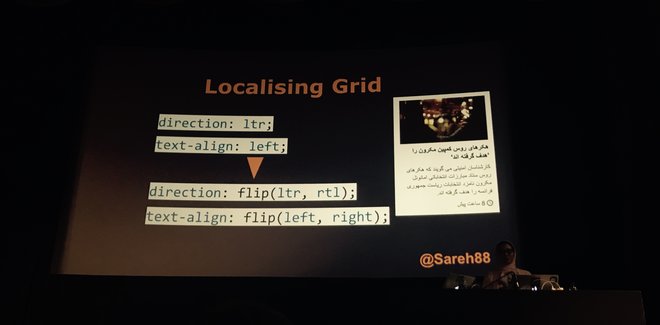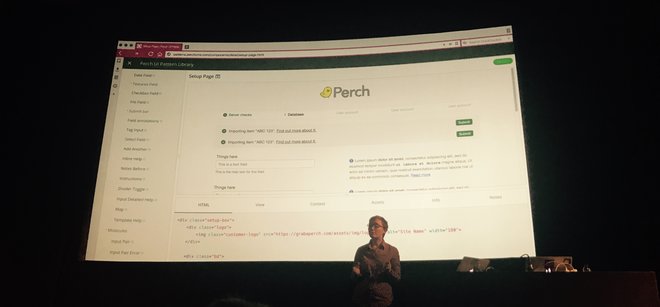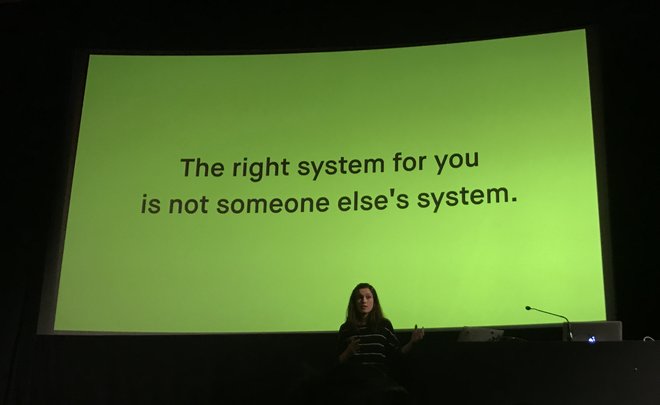Reading List
Coherence, Lego and how naming things is hard: Patterns Day 2017 from hiddedevries.nl Blog RSS feed.
Coherence, Lego and how naming things is hard: Patterns Day 2017
Pretty much all of my projects in recent years have involved pattern libraries: setting them up, promoting their usage and coding actual patterns. So when Jeremy Keith of Clearleft announced he would host a Patterns Day, I bought a ticket instantly. A full day of design system nerdery sounded like a great thing to travel to Brighton for. And it was definitely worthwile…
Pattern libraries can be hard to get right: not only do you need to gather patterns and put them in a library, you’ll likely also want to avoid code repetition, make sure they integrate with your application code, get others in your organisation to care for and use the library and find a way to make the distinct modules you’ve created form one sensible whole. Patterns Day conference covered all of these subjects and more.
Audio of the day is available as podcast on Huffduffer, videos have also been recorded and will probably follow soon.
The talks
The conference had a fantastic start with Laura Elizabeth, who talked about selling design systems. She said they are great as they ensure consistency, shared vocabulary and understanding of the medium for less technical people. They also have problems: keeping them maintained is hard, they are a lot of work (often underestimated), and there is a chance they won’t be worth the investment. Laura explained that making the case for design systems can be a two step process: first, find a common pain, then gather data. According to her, a pattern library works when the need for it is equal to or larger than the effort require to build it (and that effort is usually huge). My main takeaway from this talk was: if you want to do well at selling your pattern library, be aware of potential shortcomings and gather data to support your claims.
The second talk of the day was by Ellen de Vries (we’re not related, not as far as I know anyway). Her talk was lots more theoretical and went into what it means for a system to be coherent. One way to improve coherence, and this is something we can learn from architecture, is to look at more than just the parts and consider the usage of our designs by people and the larger world around the design (when a performance area is designed for a park, the designer could consider what the charge for attending concerts should be). A story in books or films can be defined as personal experience in space over time. A story in books is a more fragmented experience: content guidelines can help users make more sense.
After the break, Sareh Heidari took the stage. She works at BBC News and told us about both their design language (GEL) and their approach to CSS architecture (Grandstand). Turning things into a pattern helps avoiding the repetition of CSS. Grandstand has namespaced objects and utilities, but also mixins to aid localising typography and grids. These mixins effectively turn direction-dependent properties into direction-agnostic ones, so that one rule can be used in generation of stylesheets for both left-to-right and right-to-left languages. Sarah also emphasised how important communication is, if you want to keep your codebase lightweight (challenge those who want to add new variations, they might not be absolutely necessary).
 Sareh Heidari explaining mixins for localisation
Sareh Heidari explaining mixins for localisation
In the next talk, Rachel Andrew discussed two bits of software I use almost daily: Fractal (a component library tool) and Perch (the CMS this website runs on). She recommended making your pattern library the single source of truth for UI styles (as the Perch one is for Perch’s UI), and choosing a pattern library approach that makes renaming trivial (as Fractal does) so that you don’t need to worry too much about naming. A pattern page is like a reduced test case, Rachel said, and they’re great for experimenting in isolation. I had never thought of it like that, but realised that is certainly something I use pattern pages as.
 Rachel Andrew showing Perch’s Fractal instance
Rachel Andrew showing Perch’s Fractal instance
After the lunch break, Alice Bartlett talked about the Financial Times’ Origami pattern library, specificly about what’s next when you’ve built your actual library. She explained templating is ok for a specific stack, but hard (impossible?) to do right if your organisation has multiple stacks. No templating at all is likely a bad idea that causes duplication and makes simple changes like classnames hard. Serving CSS/JS is easy if you serve everything always (can work if your site is not too complex), but separation can be done. Origami has a repo for each individual pattern so that projects that use it can use just what they need (or include just that from the Origami CDN if they don’t want to bother with asset management). Rule for all of this: choose the simplest for the job (the best tooling is no tooling!). Alice also went into non-technical aspects of pattern library success in big organisations: have fantastic documentation, put effort in making sure people in your organisation are aware the pattern library exists (so: do marketing, basically) and have a support channel and incident reports.
Jina Anne did something completely different and read a story to us, which was beautifully illustrated on the slides that complemented it. I’l have to refer you to the videos for this.
Paul Robert Lloyd let us look at the bigger picture, with some interesting examples from architecture. He asked a number of thought-provoking questions about how our choices are informed: is there room for irrationality when our design systems embrace mathematical precision, do the tools we use dictate our approach to design systems (like Photoshop’s ’New File‘ screen asking for dimensions), does culture affect our decisions and do we serve the interests of the organisation we work for or those of the people affected by our work?
The last talk of the day was by Alla Kholmatova, who has spent years researching design systems and how companies use them. For her forthcoming book, she interviewed style guide people from various large companies. Her talk was about three aspects where design system implementations can differ: strictness, modularity and organisation. The first is about how strictly the system is enforced: are there rules that no one can differentiate from and strict processes for new pattern addition? Or is the system quite loose, and do you rely on your people’s familiarity with the design principles and allow for flexible and expertimental use of those? Modularity then: do you stictly separate everything into modules (high investment, but potentially cost saving in the long term) or is it acceptable to produce designs that are quite specific (and potentially easier to build, but harder to scale)? And lastly, organisation: is it centralised or distributed? Is there one team that creates and vets everything (more reliable, but potential bottleneck), or can people across all teams contribute (more autonomy, but potentially dilutes creative direction)? These three aspects provide a great way to think about what kind of design system works for your organisation. With examples from AirBnB to TED, Alla showed that different companies make different choices on these scales, and she recommended us to make our own choices: ’the right design system is probably not someone else’s design system‘, she concluded.
 Alla Kholmatova: the right system for you is not someone else’s system
Alla Kholmatova: the right system for you is not someone else’s system
Takeaways
These are some of my takeaways and things I felt recurred across the different talks:
- Moving from a static page comp approach to working on pattern libraries can completely change our way of thinking about making websites. A pattern page as an isolated test case is one of those things.
- Wholes are just as important as parts: it’s great we spend time on isolated components, but the end user experiences however they’ve ended up being used together, it is important not to lose sight of that.
- There are many complex solutions (like static asset APIs, versioning, templating to serve multiple stacks), but your organisation’s problems may not require them. Keep it simple if you can, introduce more complex solutions if your research shows you have to.
- Marketing your pattern library is a thing, especially in bigger organisations. People can also build web products using their own code or Bootstrap. It’s unlikely for others to promote your pattern library, so if you want it to be success you’ll have to put your sales hat on.
- We aren’t the first people to solve these kind of problems: architects (of buildings) have long worked with modules and wrote at length about making them work in wholes.
In his closing remarks, Jeremy asked if he should do another Patterns Day next year. For what it’s worth, I would love to attend another one! There’s lots more to discuss and a year later, more of our shared problems will have likely been solved by people. I would love to hear more about, for instance, how to test for accessibility in a pattern library world.
I’m looking forward to bringing some of the stuff I learned into practice when coming back to work next week!
Originally posted as Coherence, Lego and how naming things is hard: Patterns Day 2017 on Hidde's blog.